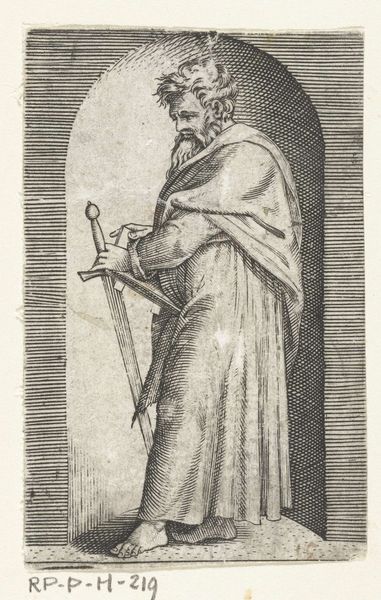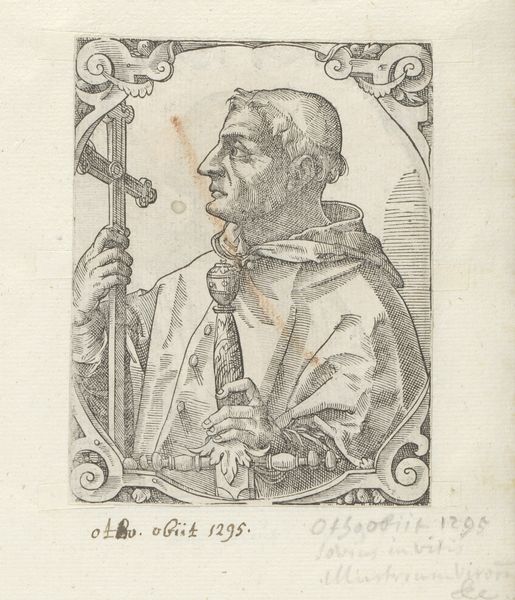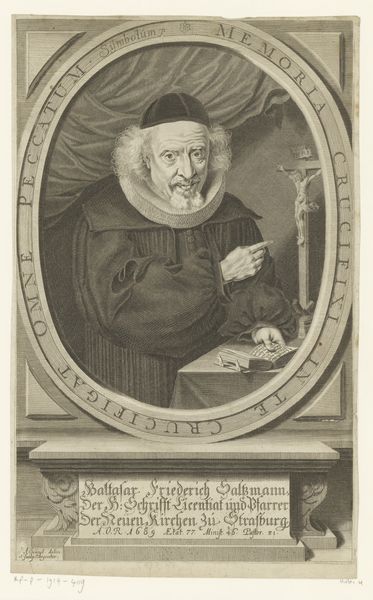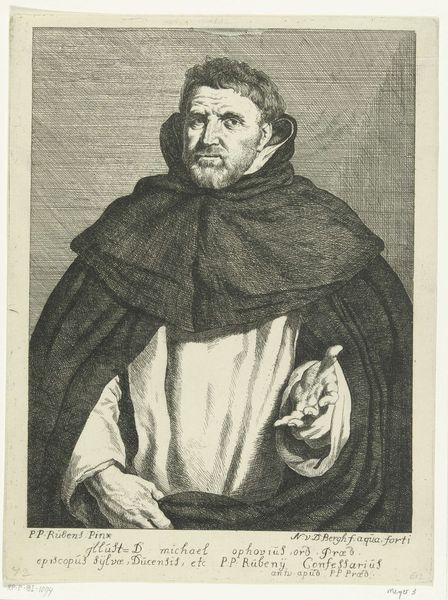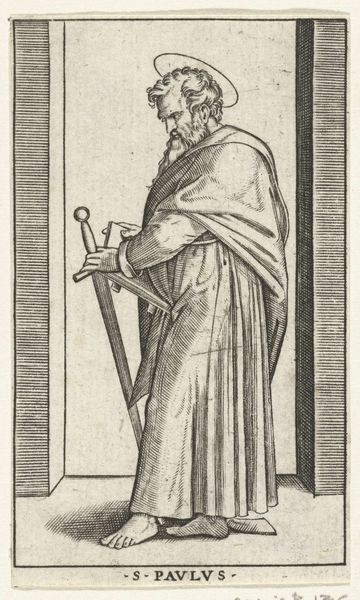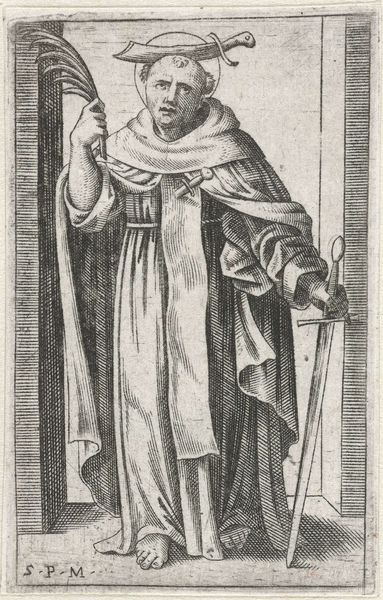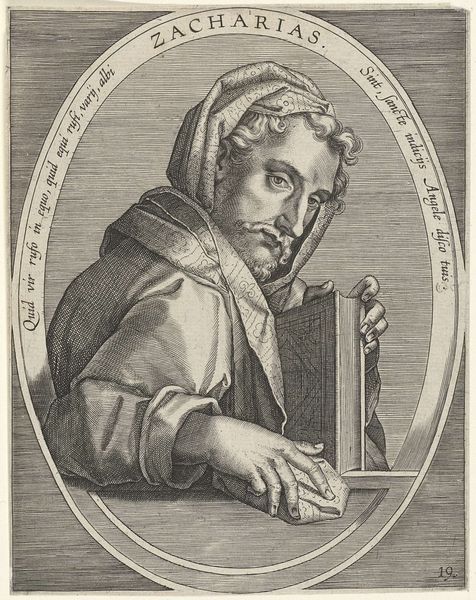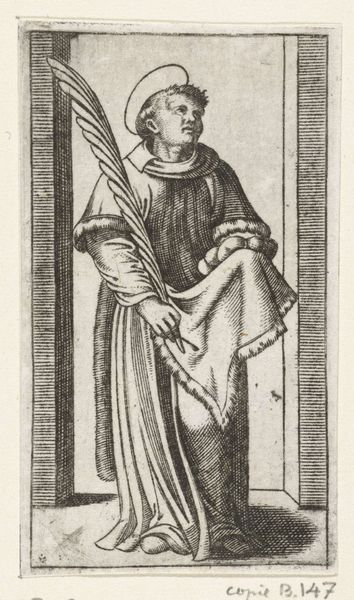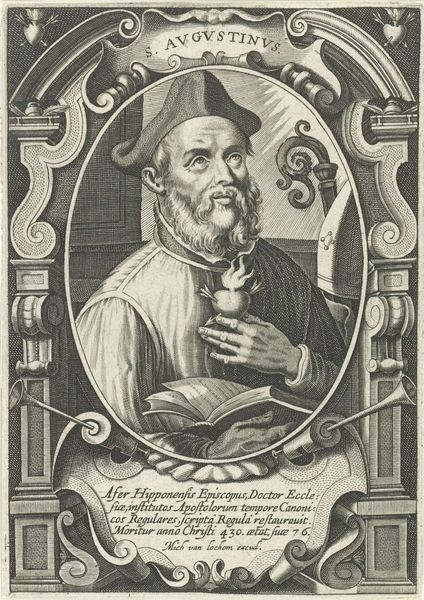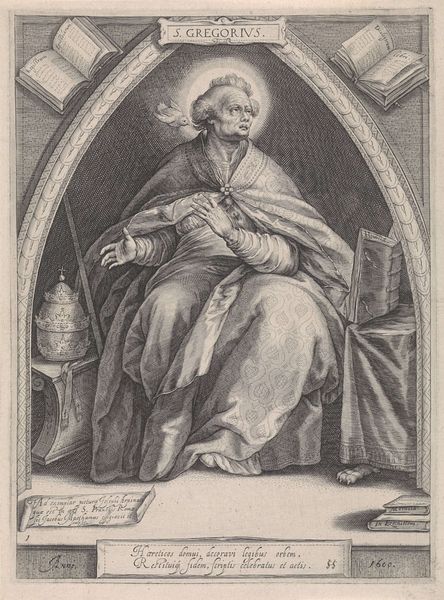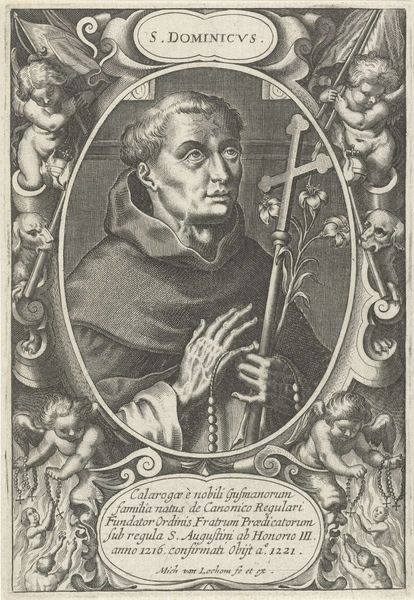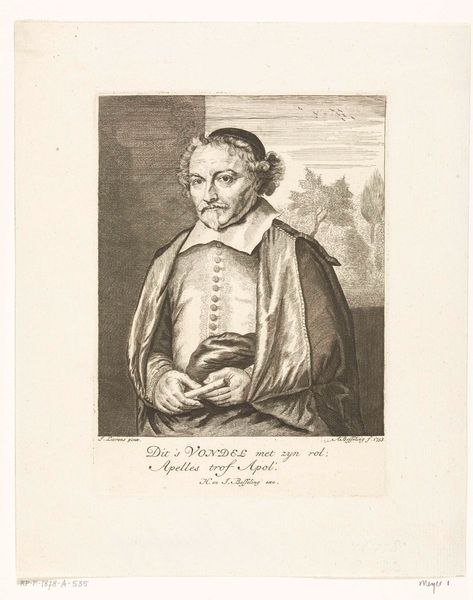
print, engraving
#
portrait
#
baroque
# print
#
line
#
history-painting
#
engraving
Dimensions: height 93 mm, width 66 mm
Copyright: Rijks Museum: Open Domain
Curator: Glimpsing this piece for the first time, the overwhelming darkness contrasting starkly with the saint’s luminous face produces an immediate sensation of dramatic tension. Editor: That's fitting, given this engraving by Gérard Edelinck, after a design by C. Galle, depicts "Petrus Martyr." It likely dates between 1652 and 1666. The line technique truly adds to that chiaroscuro effect you mentioned. Curator: The linear hatching, combined with the subject matter, signals the Baroque style, imbuing the saint’s figure with an otherworldly intensity. Editor: And look closer at the weaponry—a piercing arrow and an upright sword looming above his head, they are symbols that speak volumes about martyrdom and the political and religious climate of the era. This was a time of considerable turbulence and religious strife. How do these violent motifs position Petrus Martyr within that conflict? Curator: It serves as a grim reminder of religious persecution. Petrus, holding the martyr's palm, his gaze seemingly fixed upwards as if towards salvation or judgement. The landscape glimpsed in the upper-left also acts to establish his former position as a Dominican preacher traversing dangerous spaces. Editor: Observe how Edelinck utilized his mastery of line to carve texture from his simple strokes; from the velvety shadows of the robes to the smooth expanse of Petrus' face, they masterfully communicate a dynamic play of light and shadow. And don't overlook the careful balance; the palm and arrow counter the positioning of the sword—which speaks to the Baroque aesthetics of harmony achieved through visual contrast. Curator: It's hard to separate that aesthetic approach from the narratives being portrayed and perpetuated, though. The rendering of Petrus emphasizes his sanctity. The deliberate staging of his suffering speaks to historical struggles within larger religious and cultural conflicts—shaping our understanding of sacrifice and belief in relation to gender, power and politics. Editor: Very true. That the artist has situated us within history. Curator: Indeed. It is interesting to note how the piece is still able to invite nuanced reflections. Editor: A fitting note, I think, on which to end.
Comments
No comments
Be the first to comment and join the conversation on the ultimate creative platform.
